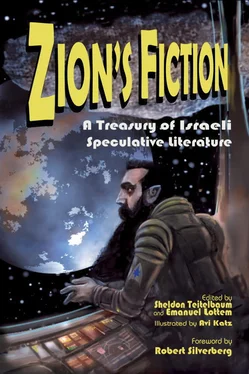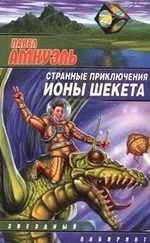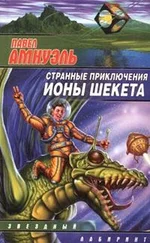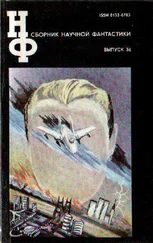Ioram Melcer, “Why Doesn’t It Rain Fish Here?” in With Both Feet on the Clouds , 194; Gomel, “What is Reality?” 32.
Robert Scholes, Structural Fabulation: An Essay on the Fiction of the Future (Notre Dame and London: University of Notre Dame Press, 1975).
Baruch Kimmerling, The Invention and Decline of Israeliness: State, Society, and the Military (Berkeley: University of California Press, 2001), 8; Elana Gomel, “What Is Reality,” 33–34; Diana Pinto, Israel Has Moved (Boston: Harvard University Press, 2013), 1.
Dan Horowitz and Moshe Lissak, Trouble in Utopia: The Overburdened Polity of Israel (New York: SUNY Press, 1989).
Very early on, the Zionist movement was almost split by a conflict between two opposing views: the so-called Territorialists held that the Jewish Problem required an immediate solution and were willing to accept any territory that may be offered, notably British Uganda. The Zion’s Zionists faction, on the other hand, insisted on the Land of Israel as the only possible place in which the desired solution could be implemented. Herzl himself initially supported the former view but then yielded to the Zion’s Zionists to prevent the dissolution of his fledgling movement.
Hareven, “What Is Unimaginable?” 46. This, however, has not stopped allohistorical speculation on the matter, as in “What If Frank Had Immigrated to Palestine,” in Gavriel D. Rosenfeld, What Ifs of Jewish History (Cambridge: Cambridge University Press, 2016), 187–214. Larry Niven quote from a panel discussion on the Doomsday Asteroid at the Weizmann Institute, Rehovoth, Israel, March 20, 2007, according to editor E. L.’s recollection.
Rachel S. Harris, “Israeli Literature in the 21st Century: The Transcultural Generation: An Introduction,” Shofar 33, no. 4 (Summer 2015): 1–14, 200, quote from p. 1, retrieved from Proquest electronic database. Post-Zionism refers to a sense that by restoring Jewish sovereignty in the State of Israel, the Zionist movement has fulfilled its destiny and may therefore be designated as complete, hence obsolete.
Sheldon Teitelbaum, “Out of Science Fiction, a New View of Contemporary Reality,” Los Angeles Times , January 17, 1988.
Hareven, “What Is Unimaginable?” 45.
“About CyberCozen,” http://www.kulichki.com/antimiry/cybercozen.
Oren Soffer, Mass Communication in Israel: Nationalism, Globalization, and Segmentation (New York: Berghahn Books, 2015), 2.
Gomel, “What Is Reality?” 36.
Quoted in Soffer, Mass Communication , 14.
Shlomo Errel, Undersea Diplomacy (Tel Aviv: Maariv Books–Hed Artzi Publishing, 2000); Amnon Rubinstein, The Sea above Us (Tel Aviv: Schocken Publishing House Ltd., 2007); Yossi Sarid, Accordingly We Are Here Assembled: An Alternate History [in Hebrew] (Tel Aviv: Yedioth Ahronoth Books and Chemed Books, 2008).
Keren Omry, “SF 101,” Science Fiction Research Association Review 306 (Fall 2013), retrieved from author’s website.
Gurevitch, Gomel, and Graff, eds., “Introduction,” With Both Feet on the Clouds , 9.
Omry, “SF 101.”
Kimmerling, Invention and Decline, 16, 23.
Alan L. Mintz, Translating Israel: Contemporary Hebrew Literature and Its Reception in America (Syracuse, NY: Syracuse University Press, 2001), 50.
Gershon Shaked, “Facing the Nightmare: Israeli Literature on the Holocaust,” in The Nazi Concentration Camps (Jerusalem: Yad Vashem, 1984), 690; Gary K. Wolfe, “Introduction: Fantasy as Testimony,” in The Fantastic in Holocaust Literature and Film , edited by Judith B. Kerman and John Edgar Browning (Jefferson, NC: McFarland & Company, 2015), Kindle edition, loc. 137 of 4490.
Judith B. Kerman, “Uses of the Fantastic in the Literature of the Holocaust,” in Fantastic in Holocaust Literature and Film , loc. 325 of 4490. Felix Frankfurter quote from Stanford University News Service, News Release, March 7, 1995, http://web.stanford.edu/dept/news/pr/95/950307Arc5338.html.
Adam Rovner, “Forcing the End: Apocalyptic Israeli Fiction, 1971–2009,” in Narratives of Dissent: War in Contemporary Israeli Arts and Culture [e-book], edited by Rachel S. Harris and Ronen Omer-Sherman (Detroit: Wayne State University Press, 2012), 209.
It is very interesting to note that a similar trend can be discerned now in the Arab world, where “a new wave of dystopian and surrealist fiction [emerges] from Middle Eastern writers who are grappling with the chaotic aftermath and stinging disappointments of the Arab Spring. Five years after the popular uprisings in Egypt, Tunisia, Libya and elsewhere, a bleak, apocalyptic strain of post-revolutionary literature has taken root in the region. Some writers are using science fiction and fantasy tropes to describe grim current political realities…. ‘There’s a shift away from realism, which has dominated Arabic literature,’ said the Kuwait-born novelist Saleem Haddad…. ‘What’s coming to the surface now is darker and a bit deeper.’” (“Middle Eastern Writers Find Refuge in the Dystopian Novel,” New York Times , Books Section, May 29, 2016.) A notable example is Iraqi writer Ahmed Saadawi’s Frankenstein in Baghdad: A Novel (Arabic, al Kamel, 2013; English translation, Penguin Books, 2018).
Rovner, “Forcing the End,” 206, 209.
Ibid., 99, 206; Arik Einstein, Eretz Yisrael haYeshana vehaTova , Phonodor album 13038, 1973.
Amos Oz, Late Love , in Unto Death , translated by Nicholas de Lange (New York: Harcourt Brace Jovanovich, 1975).
Hareven, “What Is Unimaginable?” 30.
Sayed Kashua, Let It Be Morning (New York: Grove Press, Black Cat, 2006).
Compare Robert A. Heinlein’s Revolt in 2100 , in which the United States is a theocracy ruled by a self-proclaimed Prophet.
Not that this would stop similarly themed novels from Amit Godenberg, Ir Nidachat [A city withdrawn], 2015; Yishai Sarid, Ha’Shlishi [The third one], also 2015; or Dror Burstein, Teet [Clay], 2016.
Yitshak Ben-Ner, “Aharey haGeshem” [After the rain] (Tel Aviv, 1977).
Gershon Shaked, Gal Ahar Gal baSipporet haIvrit [Wave after wave in Hebrew narrative fiction] (Jerusalem, 1985), 168; Avraham Hagorni, “A Dwarf and a Half” [in Hebrew], Davar , November 20, 1987.
Yali Sobol, Etzba’ot shel Psantran [A pianist’s fingers] (Tel Aviv: Kinneret Zmora Bitan Dvir, 2012); Weingrad, “Riding Leviathan.”
Orly Castel-Bloom, Dolly City (Dalkey Archive Press, 2010), 76–77.
Читать дальше






